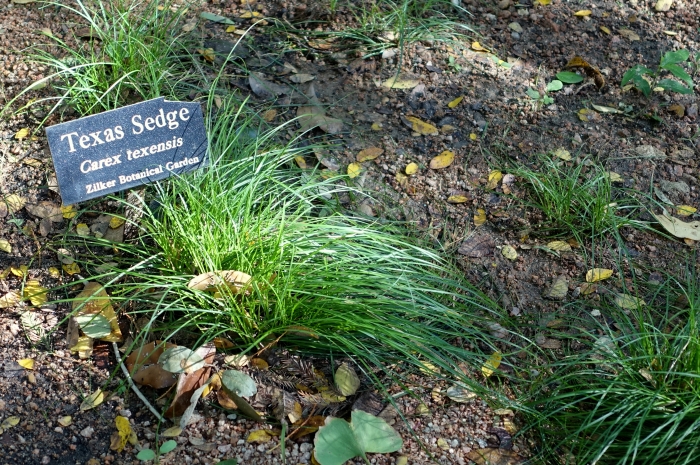Texas Sedge
(Carex texensis)
Texas Sedge (Carex texensis)
/
/

Daderot
CC0
Image By:
Daderot
Recorded By:
Copyright:
CC0
Copyright Notice:
Photo by: Daderot | License Type: CC0 | License URL: http://creativecommons.org/publicdomain/zero/1.0/deed.en | Uploader: Daderot | Publisher: Wikimedia Commons | Title: Carex_texensis_-_Zilker_Botanical_Garden_-_Austin,_Texas_-_DSC08932.jpg | Notes: User created page with UploadWizard |
































Estimated Native Range
Summary
Carex texensis, commonly known as Texas Sedge, is an evergreen perennial grass native to open woodlands, savannas, and meadows in the central and southeastern United States. It typically grows to a height of 0.3-1 feet (0.09-0.3 meters) and can spread to about 3 feet (0.9 meters) wide. This sedge forms dense clumps of fine-textured, grass-like foliage that is a vibrant green year-round, and it produces inconspicuous greenish-brown flower spikes in late spring.
Texas Sedge is valued for its low maintenance and adaptability, making it an excellent ground cover for shaded areas. It is often used in naturalistic plantings, as a lawn substitute in low-traffic areas, and for erosion control due to its dense mat-forming habit. Texas Sedge thrives in a range of soil types, from clay to sandy loam, provided they are well-drained. It is drought-tolerant once established and can handle both part shade and full sun, though it prefers some afternoon shade in hotter climates. While generally pest and disease-free, it can suffer in overly wet conditions.CC BY-SA 4.0
Texas Sedge is valued for its low maintenance and adaptability, making it an excellent ground cover for shaded areas. It is often used in naturalistic plantings, as a lawn substitute in low-traffic areas, and for erosion control due to its dense mat-forming habit. Texas Sedge thrives in a range of soil types, from clay to sandy loam, provided they are well-drained. It is drought-tolerant once established and can handle both part shade and full sun, though it prefers some afternoon shade in hotter climates. While generally pest and disease-free, it can suffer in overly wet conditions.CC BY-SA 4.0
Plant Description
- Plant Type: Grass
- Height: 0.3-1 feet
- Width: 1-3 feet
- Growth Rate: Moderate
- Flower Color: N/A
- Flowering Season: Spring, Summer
- Leaf Retention: Evergreen
Growth Requirements
- Sun: Part Shade, Full Sun
- Water: Medium
- Drainage: Medium
Common Uses
Bank Stabilization, Bird Garden, Butterfly Garden, Deer Resistant, Drought Tolerant, Groundcover, Low Maintenance
Natural Habitat
Native to open woodlands, savannas, and meadows in the central and southeastern United States
Other Names
Common Names:
Scientific Names: , Carex texensis, Carex retroflexa var. texensis, Carex rosea var. texensis,
GBIF Accepted Name: Carex texensis (Torr. ex L.H.Bailey) L.H.Bailey